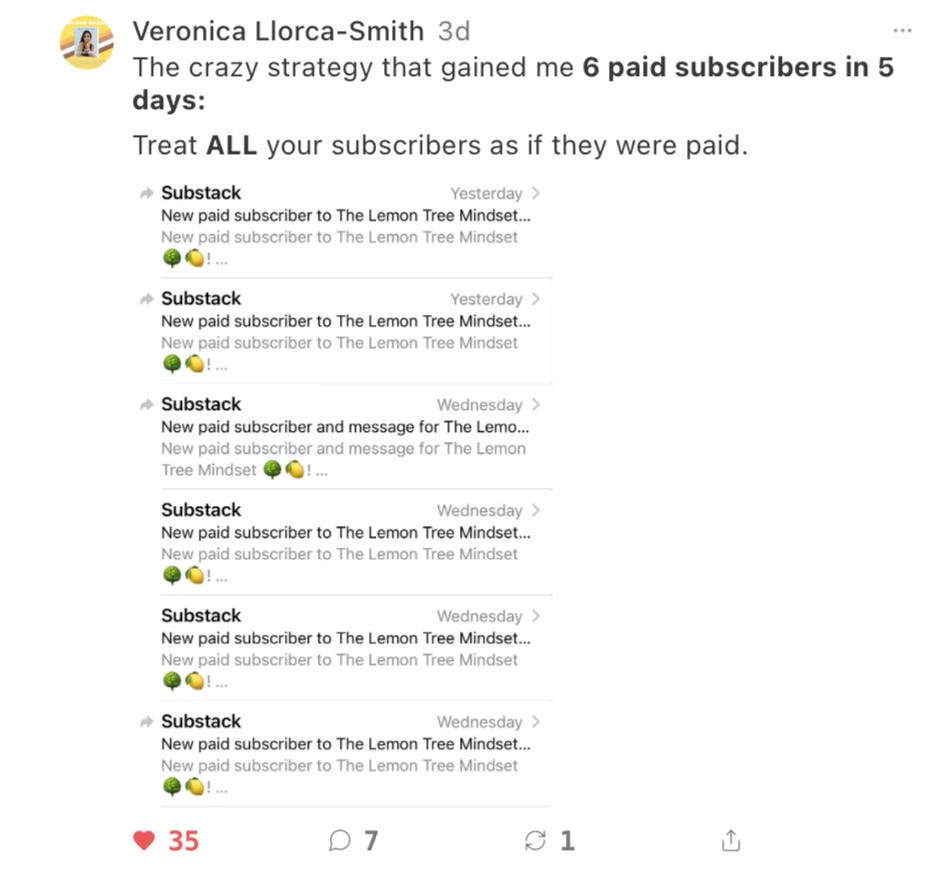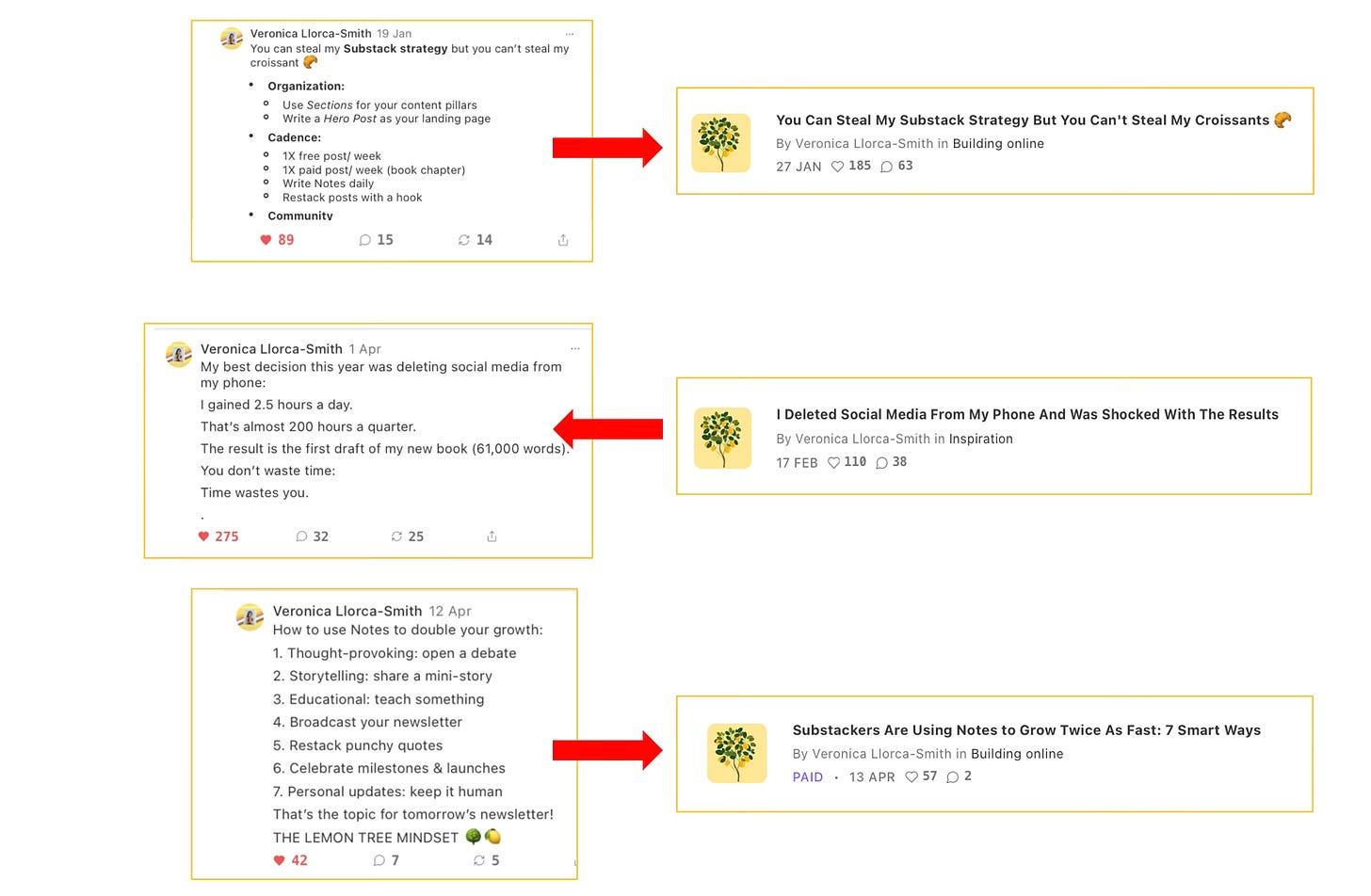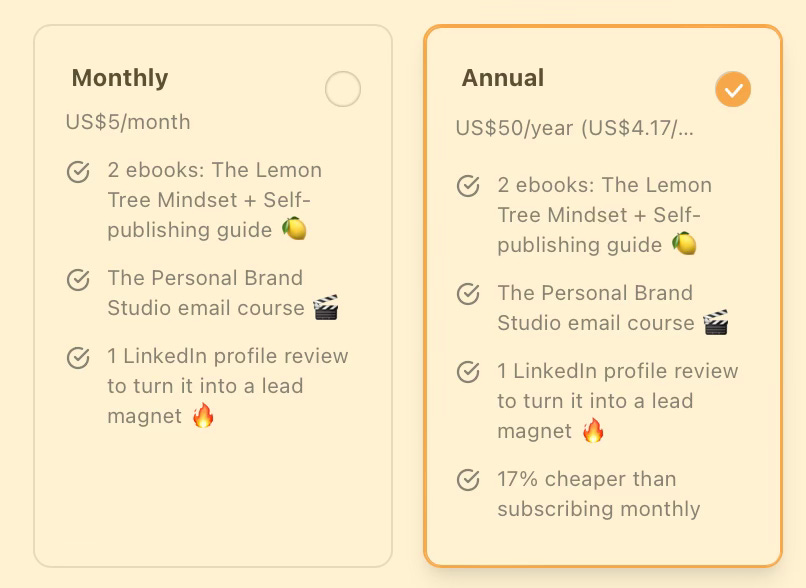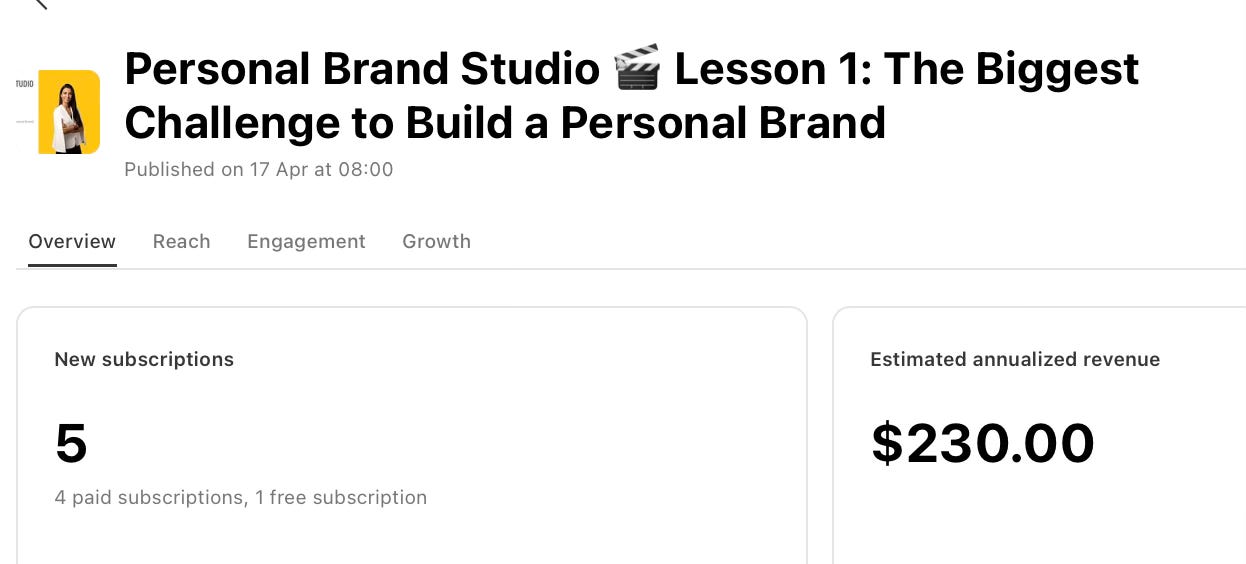My Fremium Strategy: 6 paid Subscribers in 5 days
Treat all your subscribers as if they were paid
The only thing better than writing is getting paid for it.
Call me materialistic, but I would rather turn my passion into a lifestyle rather than work my ass off to sponsor my boss’ holiday in Bali.
So when platforms like Substack give us the option to monetize our writing, I embrace it and welcome it shamelessly with open arms.
This week, I posted a Note that triggered some reactions. People were curious to know how I gained 6 paid subscribers in 5 days.
I promised I was going to elaborate, so let’s lift the curtains…
The paid vs free dilemma
I’ve been writing on Substack for 15 months, and the big dilemma is: free or paid?
There are 3 types of approaches, and each has their pros and cons:
1. Free
Some writers opt for a no-paywall strategy and publish all their work for free.
Surprisingly, they still generate paid subscriptions, as many readers are willing to pay for a product or service, even if it’s free, provided they find it valuable.
This is not unique to Substack. In fact, many creators publish their work on Gumroad for free with the tagline, “Name a fair price,” and some buyers actually pay for something that’s technically free.
✅ This strategy is great for beginners who are building their community and testing the platform or those not ready for a bigger commitment.
I only started using the paywall 6 months after I launched my newsletter. That gave me time to build confidence and step up my game, all while growing my little tribe.
⚠️ The danger here is that you rely on people’s generosity, which is not a sustainable growth strategy. If your long-term goal is to monetize your writing, you are better off leveraging the paywall on your terms.
If you’re happy treating your Substack as a hobby that brings in some extra money, this approach can work well. It can help you grow fast, removing the pressure from formalizing it.
2. Paid
A smaller portion of writers, mostly seasoned ones with a deep footprint, hide most of their writing behind a paywall, leaving only a cheeky preview as a teaser.
✅ This approach works best if you have a large following, as it creates a positive bias and a high-value perception. It’s like an expensive fine-dining restaurant that is always full. The quality must be great.
Having a ton of paid subscribers is the ISO of a newsletter: the community has endorsed it.
⚠️ The downside is that it limits your reach, especially if you are starting, and hinders the community element. Additionally, most readers love getting to know someone’s work and having a taste before committing to the fine dining experience, aka paid subscription.
3. Freemium
The vast majority of writers fall under this category.
They generally put most of the content free but add a paywall here and there, a bit like a mouse trap, to see what happens 🐭
The results vary, but generally, as you grow your subscription base, so does your paid subscription. According to Substack, 5-10% of subscribers convert to paid, although the self-reported data (and my own) seems closer to 2-3%.
✅ This model allows for more flexibility and experimentation, and you enjoy the best of both worlds: you build a community while testing different ways to monetize your writing.
⚠️ The challenge here is finding the right balance between free and paid without making it sound like it’s Black Friday every day.
My freemium strategy
I love the concept of freemium and I’ll never put all my writing behind a paywall because I want to impact as many people as possible, with or without the money.
My strategy is to treat ALL my subscribers as if they were paid.
I treat Substack as if it were a part-time job where I report every week to one boss: my subscribers.
What does that mean in practice?
MindsetIt’s not up to me to judge the quality of my writing, but I don’t slack on it or give myself any concessions just because it’s free. I spend hours editing, formatting, and scratching my head to find new ways to add value.
My free stuff is my main weapon. I go 100% max effort. I don’t earn a cent from it, but I write as if my paycheck relied on it.
ConsistencyEven if your content is free, consistency is key.
Showing up every week at the same time shows commitment, discipline, and reliability.
If your favorite place has a Taco Tuesday, you look forward to it and would be disappointed if they suddenly remove it.
Underpromise and overdeliver.
FeedbackThe best way to improve a service is to act on your customers’ feedback.
I find different ways to get insights from my readers and see what resonates:
- A recent Poll showed that my subscribers are interested in personal branding.
- Most of the comments on a Post about spicing up your writing were SEO-related.
- Threads help me uncover my subscribers’ challenges (imposter syndrome, new online, etc).
- Notes help me test topics of interest before I write a newsletter, such as this one.
I ask my subscribers, ALL my subscribers, what challenges they have and what would add value to them, and I create FREE content for them all.
Trust As I started to gain more paid subscribers, I noticed one thing: 200% of them upgraded from free.
Most had been my subscribers for months. A few had already connected with me via LinkedIn or Medium, and we had built a connection.
The key to monetizing your work is trust.
If people find value in what you write and build a connection, it’s a matter of time before they are ready to go one step further.
Value + Connection + Time = Trust
If week after week, you keep delivering delicious tacos on Tuesdays, one day, they might be ready to join your Wednesday special.
And even if only 20% of your work is behind the paywall, they give it a try. Then, it’s up to you to over-deliver.
My freemium tactics
I wish I had a secret formula to consistently gain 6 paid subscribers in 5 days. I don’t, but I can share what I’ve done, changed, and tweaked to see that little sparkle of success:
1. Beyond bread and butter If your only incentive is “unlimited access to my digital library,” you’re going to have a hard time breaking through the clutter.
Experiment and offer things that are different and interesting. Here are some creative examples:
- A 30-min coffee chat/ coaching session ☕️
- Free ebooks (I give away 2)
- A digital course
- Feedback on a piece of writing
- A LinkedIn profile review (my subscribers love it)
- An exclusive Thread or paid community
Be bold, be creative, make it fun!
Add the Margheritas to the party🍹🍹🌮🌮
2. Creating FOMO One of my biggest mistakes when I started was not clearly communicating the benefits of a paid subscription.
By default, Substack does it for you, and it seems that the marketing person was OOO that day: “Exclusive articles” 😴
If you are offering something cool or surprising, don’t keep it a secret: customize your settings and add some spice.
Readers don’t like to second-guess: spell it out and create FOMO.
3. Always fresh ingredients 5US$ a month doesn’t sound like a lot, but in the digital context where there’s so much free information, you have to constantly surprise and delight.
It takes months to gain subscribers and seconds to lose them.
I recently launched the Personal Brand Studio 🎬 as part of my newsletter.
It’s a weekly course to build your personal brand and monetize it.
I made a big launch announcement and Lesson #1 generated 5 subscriptions, 4 paid. I was over the moon!
All of them were existing subscribers who were upgrading from free.
Freemium is the new premium.
4. One CTA No one likes an article full of CTAs and affiliate marketing links, but writers want to be paid for their hard work, and it’s only fair.
The secret is to shift from selling to helping and keep a balance:
How many actions do you want your subscribers to take?
How many are they likely to take?
One - if you’re lucky.
People won’t share, comment, purchase your ebook, leave a review, walk your dog, and then upgrade to pay.
Focus on one 1 CTA, 1 problem and 1 solution, and make the value clear:
What are you solving for?
The sale is just a by-product.
Currently, my key incentive to upgrade is the Personal Brand Studio:
- Struggling to build your personal brand online? (problem).
- This course gives you frameworks to grow your brand and monetize it (solution).
- Upgrade now for the full experience (CTA).
Don’t ask readers to do a dozen other things, and don’t try to be the panacea for everyone.
One person, one problem, one solution.
Your (Freemium) takeaway
I hope you enjoyed your Taco Tuesday, and in case you are in a rush, here is your takeaway:
- Treat all your subscribers as if they were paid.
- Be consistent, reliable and lead with quality.
- Value + Connection + Time = Trust
- Ask for feedback
- Spice things up with new ingredients
- Create FOMO
- Focus on ONE: 1 person, 1 problem, 1 CTA
Lemons & Lemonade 🌳🍋
This might be useful:
You Can Steal My Substack Strategy But You Can't Steal My Croissants 🥐








I love what you said that you treat all your subscribers as “paid subscribers”
I have settled on a freemium approach. I didn’t realise it had a special name. I wanted to offer all the digital planning pages that I love creating so I have put them after the paywall.